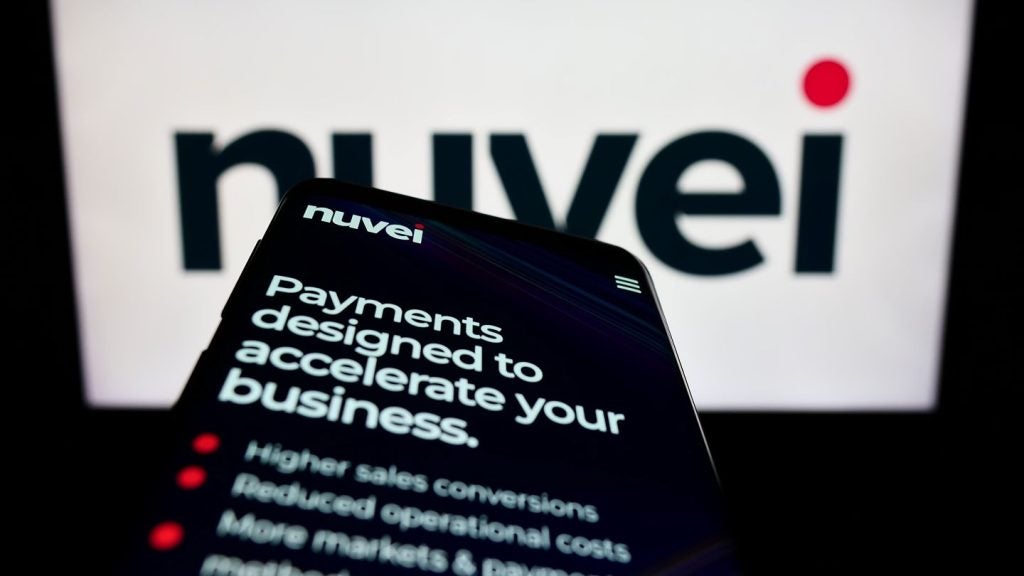Mexico’s reliance on cash as a form of payment is set to continue over the next four years, making the country an anomaly among the world’s major economies, an analysis of GlobalData figures reveals.
Cash payments have decreased substantially in recent years across the rich world, with other payments methods, like cards or digital wallets, becoming more popular. The covid pandemic has accelerated this cash displacement because of decreasing in-person payments and retailers increasingly accepting cash less.

Access deeper industry intelligence
Experience unmatched clarity with a single platform that combines unique data, AI, and human expertise.
The 2021 McKinsey Global Payments Report reported that cash payments declined by 16% in 2020 and non-cash transactions grew by 6% globally between 2019 and 2020.
This trend is set to continue in the next four years with India making the most dramatic leap according to forecasts from GlobalData. In 2019 82% of consumer payments in India were made in cash, however this is set to plummet to 30% by 2025. This move will leave India less reliant on cash than developed nations such as Germany and New Zealand.
Mexico – already the most cash dependent nation among the 35 analysed – is, however, forecast to buck this wider trend. While 15.8% of consumer payments in Mexico are forecast to be made using payment cards (credit or debit) cash is still set to dominate at 81.5% of payments in 2025.
This will leave Mexico as increasingly anomalous when compared to other major economies with the gap between it and the next most cash-dependant country growing from 0.2 percentage points to 8.4 percentage points over the next four years.

US Tariffs are shifting - will you react or anticipate?
Don’t let policy changes catch you off guard. Stay proactive with real-time data and expert analysis.
By GlobalDataNearly two thirds of Mexicans are unbanked according to figures from the World Bank and this dependence on cash is proving hard to shift. YouGov's 2021 Global Banking & Finance Report reported that 51% of Mexicans preferred cash payments over other types of payments – the highest score out the countries polled.
Credit becomes almost impossible to access for Mexico’s unbanked citizens, thus slowing down consumption and investment.
Many of Mexico’s small and medium businesses, who provide 95% of private sector employment in the country, have little access to credit to help manage financial uncertainty, financial recovery from the current covid pandemic is going to be far more difficult to tackle.
Growing cash displacement
While some countries are still set to be reliant on cash, the general trend is for major economies becoming increasingly cash averse.
Australia is set to see the biggest drop in cash usage with a 31.1% decrease in consumer cash transactions between 2021 and 2025. GlobalData figures predict card usage in Australia will increase by 41.4% between 2021 and 2025.
Norway is also set to become increasingly cash averse with a 29.7% reduction in cash usage between 2021 and 2025 and by 2025 cash is set to make up only 1.9% of payments.
The move away from cash across the world is also reflected in the decreased number of ATMs forecast to be available by 2025.
Between 2021 and 2025, GlobalData forecasts decreases of 5.7% and 4.5% in the number of ATMs in both Europe and the Asia-Pacific region, respectively. The decreased availability of ATMs could also fuel decreased cash usage thus further accelerating cash displacement.
The number of ATMs is set to decrease the most in South and Central America. This again can be linked to a decrease in cash usage of countries in the region but also an increase in instant payment apps in the region.
One such platform is the Brazilian app PIX, launched by Brazil’s central bank in late 2020. The country, which is set to see a 5% decrease in consumer cash payments, registers more instant payment transfers than the United States.
The app has been used by a little more than half of the population with around 110 million Brazilians using the app at least once.







